80 YEARS AGO: BLINDING FLASH, DEAFENING CONCUSSION AND DEATH - Thanksgiving Tragedy 1945: Cabot Station Explodes
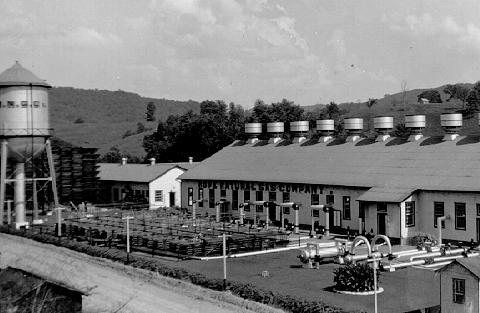
The Hope compressor station at Cabot Station contained large engines to push natural gas from the area, grounds had cooling "ponds" for engines
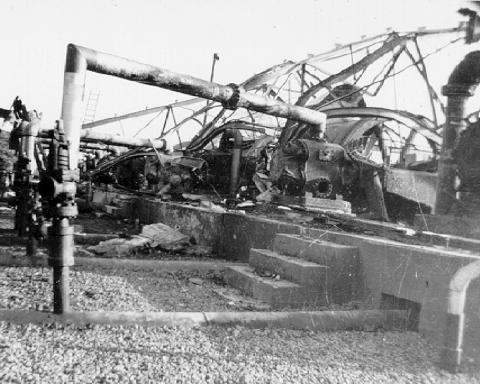
Walls blew down, twisted pipes and machinery in 1945 explosion
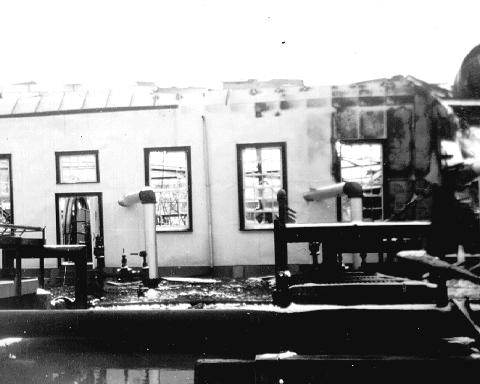
Two men lost their lives in 1945 blast, others injured
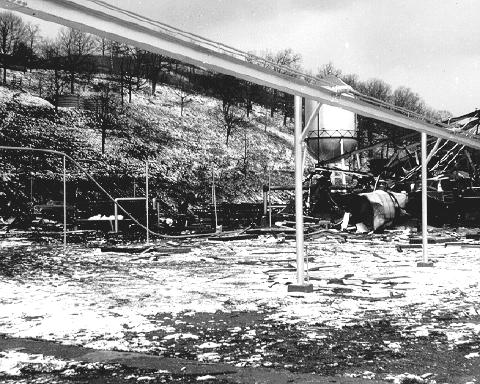
Water tower survived blast, water used to put out the fire
Compiled by Norma Knotts Shaffer, Editor of the Herald's "Photo of the Day" and "Moments in Time"
After four long years the nation was finally at peace and World War II was over. Calhoun's servicemen were returning home to resume their lives, shortages were beginning to ease and the nation was converting to peace-time economy.
The tranquility of Thanksgiving 1945 was suddenly broken as a brilliant orange flash of light illuminated the night sky and a few seconds later a deafening noise and concussion rumbled up and down the Little Kanawha River and across the Calhoun countryside.
Customers in a Grantsville drug store three miles away reported their entrance doors were partially forced open by the blasts, pictures fell from walls and windows rattled ten miles away.
Imaginations ran wild as fearful residents attempted to find an explanation. Many thought that the county was being bombed and some feared that the biblical prophesy of judgment by fire was being fulfilled.
The telephone switchboard behind the courthouse lit up and within short order the Grantsville Volunteer Fire Department assembled and the town's only fire truck headed down the river.
Neighbors passed the word "Cabot Station has blown up and is on fire."
Cabot Station's nearly 100 year history began in 1899 when Godfrey L. Cabot and a group of investors started the world's largest carbon black factory on the site. As years past and the carbon black business slumped, the enterprise was converted to a large compressor station to push natural gas from Calhoun.
By this time some of the Hope Gas employees realized what had happened and were already on the move to lend assistance at the station.
The huge compressors that pumped the natural gas through the transmissions lines was fueling the huge blaze. The main valves needed to be "closed in" to stop the fire.
Three men crossed the river by boat to shut off a valve, and a main line was shut down closer to the station. The river was "running bank to bank" as a result of storms the previous day. Once the valves had been closed, the fire was finally put under control, using water from the water tank on the grounds and the station's cooling tank.
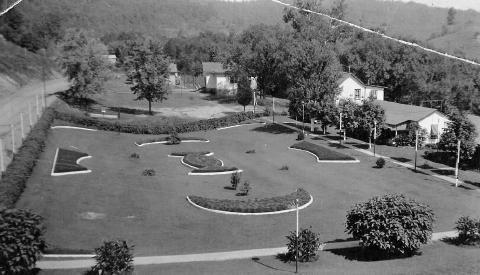
Well-kept grounds around Cabot Station, houses for company men, and Cabot Station's four-room schoo1
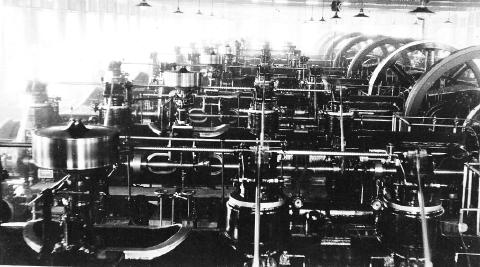
Giant engines and compressors were completely destroyed by 1945 blast
The force of the explosion destroyed the main buildings and the fire was of such magnitude as to be seen as far away as Harrisville.
On "tower" (people scheduled to work) at the time of the explosion were Isaac Davis, foreman; Elijah Nester, engineer; Harry Howell, oiler; and Claude Osborne, oiler.
Four houses east of the plant were occupied by Junior Hawkins, Carl Blosser, Frank Hefner and Marshall Limer.
Elijah Nester and Junior Hawkins lost their lives in the explosion and fire. The cause was never determined, but was believed to have started by a spark generated by metal to metal contact.
Hawkins was killed instantly and Nester died of burns in St. Joseph's Hospital in Parkersburg. Marshall Limer, chief engineer, Harry F. Howell and Isaac Davis were treated for shock and burns caused by the explosion.
The victims were laid to rest in Bethlehem Cemetery.